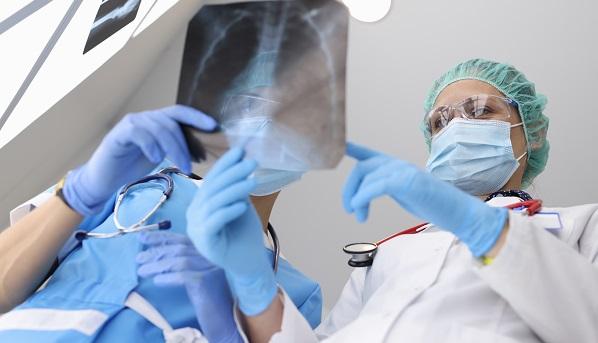New HF Uncommon After COVID-19, but Rare Cases Pose Quandary
The largest study to date looking at new heart failure diagnoses after a COVID-19 admission offers reassurances and caveats.

The largest study to date to track COVID-19 survivors for signs and symptoms of new-onset heart failure (HF) has found that new diagnoses are rare following hospitalization for severe SARS-CoV-2 infection, but in a small and worrying subset, HF appears to arise without any previous underlying disease or risk factors.
The potential for SARS-CoV-2 to have a direct impact on the heart has been a recurring topic over the past 14 months, as has debate over who and how to follow patients for possible persistent cardiac damage. Moreover, other viral illnesses such as influenza have also been known to precipitate new HF, the authors note in a research letter published in the Journal of the American College of Cardiology.
Among nearly 6,500 patients admitted with a confirmed COVID-19 diagnosis to a Mount Sinai Health System hospital in New York, just 37 received a new diagnosis of HF during their hospitalization.
Senior researcher Anuradha Lala, MD (Icahn School of Medicine at Mount Sinai, New York, NY), told TCTMD that physicians should be reassured that new HF following severe COVID-19 illness appears to be rare. “And among those patients with a new diagnosis of heart failure, a majority of them had some predisposing factors that may have contributed to the ultimate development of heart failure,” she told TCTMD.
“Still,” she continued, “we were left with eight people, who really were young and who did not have risk factors or overt cardiovascular disease, who presented with heart failure. And those are the patients that I think it would be very nice to better understand: is there a direct correlation? We're assuming that this is just an observation, but how can we better understand how SARS-CoV-2 may precipitate new heart failure? This study certainly doesn't get at mechanisms, but it makes me want to understand it more.”
A Humbling Disease Process
Prior work by Lala and colleagues helped cement the lethal impact established heart failure can have on someone who falls ill with COVID-19. In the current study, investigators led by Jesus Alvarez-Garcia, MD, PhD (Icahn School of Medicine at Mount Sinai), reviewed electronic medical records for 6,439 patients (mean age 64) discharged following an admission for COVID-19. As noted, 37 with no prior history of HF received a new diagnosis during their hospital stay, based on having two of three conditions: elevated B-type natriuretic peptide (BNP), X-ray findings compatible with HF, or diastolic or systolic dysfunction on echocardiography.
In all, 14 patients who fulfilled the HF criteria had a history of CVD and 15 had CVD risk factors. Almost one in four (22%), however, had no prior history and tended to be younger (average age 43), male, and have a lower body mass index and fewer comorbidities. First-time HF patients without CV disease or risk factors were also more likely than the other two groups to have elevations of both troponin and BNP and were more likely to present with cardiogenic shock or acute coronary syndromes.
Alvarez-Garcia et al conclude that while the point prevalence for new HF is low, there likely remains a “distinct cohort of younger patients” without a prior diagnosis of CVD or risk factors in whom new HF might develop. What to do for these patients, how closely to follow them, or indeed whether to look more systematically for new HF cases in COVID-19 survivors is not clear.
Cardiopulmonary testing would also be useful to help differentiate between pulmonary and cardiac causes of shortness of breath, she added.
“And then the question that still remains is: for those patients who do not have symptoms but who were discharged from a hospitalization for COVID-19 with a heart failure diagnosis, how should they be followed?” Lala said. “Should they be imaged? I don't think we know the answers yet. Certainly the patients who have persistent symptoms are a patient population that is important and helpful to study.”
Shelley Wood is the Editor-in-Chief of TCTMD and the Editorial Director at CRF. She did her undergraduate degree at McGill…
Read Full BioSources
Alvarez-Garcia J, Jaladanki S, Rivas-Lasarte M, et al. New heart failure diagnoses among patients hospitalized for COVID-19. J Am Coll Cardiol. 2021;Epub ahead of print.
Disclosures
- Lala reports receiving personal fees from Zoll, outside of the current work.




Comments